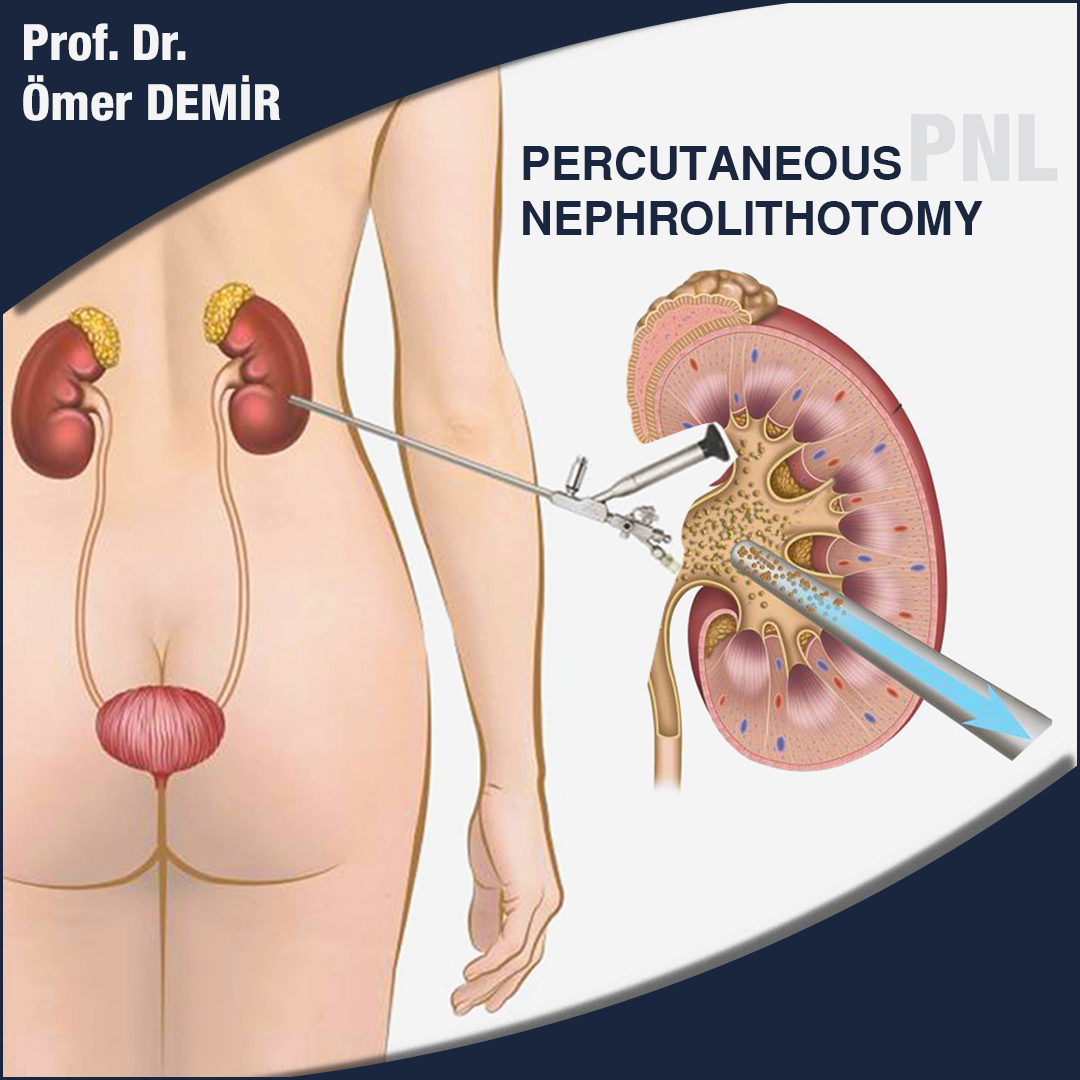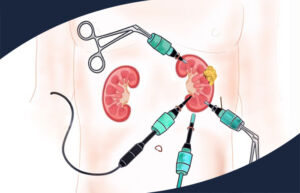MINIMALLY INVASIVE SURGERY FOR KIDNEY STONES
Minimally invasive surgery in kidney stones is basically performed in two ways;
1- With the first method called RIRS (Retrograde intrarenal surgery), the patient’s urinary channel is entered into the kidney with high-level technological equipment, the stones are formed into millimetric pieces with the help of laser, and the patient is expected to pour these parts in the postoperative period.
2- In the second method called percutaneous nephrolithotomy, approximately 1 cm incision from the waist space of the patient is entered into the kidney with high-level technological devices, and the stones are broken with various stone crushing devices and removed from the kidney.
Retrograde intrarenal surgery (RIRS)
It is a closed kidney stone surgery technique which is preferred especially for the treatment of kidney stones smaller than 1.5 cm in size.
It can be applied to women and men of all ages. Since it is a surgical technique performed by entering the natural urination channel through which the patients urinate, there is no surgical scar after surgery.
The most important advantages of this surgical technique are that it can be applied as an outpatient surgery and the patients return to normal life very quickly.

Percutaneous Nephrolithotomy
This method is a closed kidney stone surgery method that can be applied to kidney stones larger than 1 cm.
The kidney is reached with an incision of approximately 1 cm from the waist cavity area, and the stones or stones are broken up with various energy sources and removed from the kidney through the working channel.
It is a method that can be applied with a high success rate in kidney stones detected in infants and children, just like in adults.
Compared to open surgery, the recovery time and return to normal life are quite short.




